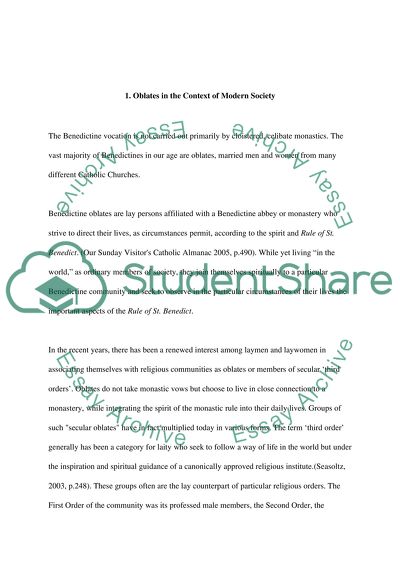Cite this document
(“How do the benedictine oblates enable the witness of Monastic Essay”, n.d.)
How do the benedictine oblates enable the witness of Monastic Essay. Retrieved from https://studentshare.org/religion-and-theology/1509850-how-do-the-benedictine-oblates-enable-the-witness-of-monastic-spirituality-to-be-expressed-in-secular-society
How do the benedictine oblates enable the witness of Monastic Essay. Retrieved from https://studentshare.org/religion-and-theology/1509850-how-do-the-benedictine-oblates-enable-the-witness-of-monastic-spirituality-to-be-expressed-in-secular-society
(How Do the Benedictine Oblates Enable the Witness of Monastic Essay)
How Do the Benedictine Oblates Enable the Witness of Monastic Essay. https://studentshare.org/religion-and-theology/1509850-how-do-the-benedictine-oblates-enable-the-witness-of-monastic-spirituality-to-be-expressed-in-secular-society.
How Do the Benedictine Oblates Enable the Witness of Monastic Essay. https://studentshare.org/religion-and-theology/1509850-how-do-the-benedictine-oblates-enable-the-witness-of-monastic-spirituality-to-be-expressed-in-secular-society.
“How Do the Benedictine Oblates Enable the Witness of Monastic Essay”, n.d. https://studentshare.org/religion-and-theology/1509850-how-do-the-benedictine-oblates-enable-the-witness-of-monastic-spirituality-to-be-expressed-in-secular-society.


